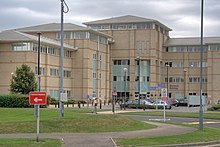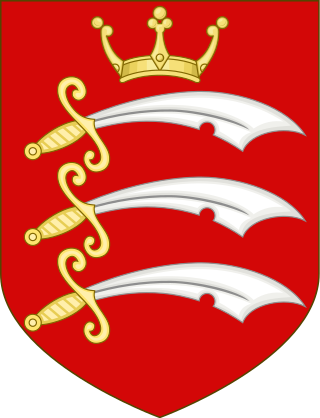
Middlesex University London is a public research university in Hendon, northwest London, England. The name of the university is taken from its location within the historic county boundaries of Middlesex.
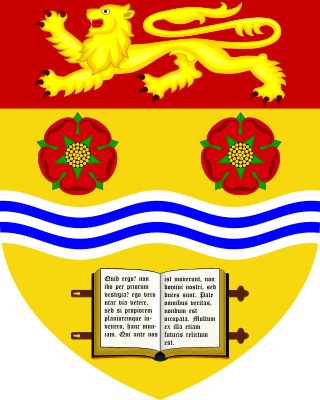
Lancaster University is a public research university in Lancaster, Lancashire, England. The university was established in 1964 by royal charter, as one of several new universities created in the 1960s.

Stockton-on-Tees is a market town in County Durham, England, with a population of 84,815 at the 2021 UK census. It gives its name to and is the largest settlement in the wider Borough of Stockton-on-Tees. It is part of Teesside and the Tees Valley, on the northern bank of the River Tees.

Thornaby-on-Tees, commonly referred to as Thornaby, is a town and civil parish on the River Tees's southern bank. It is in the Borough of Stockton-on-Tees, North Yorkshire, England. The parish had a population of 24,741 at the 2011 census, in the Teesside built-up area.
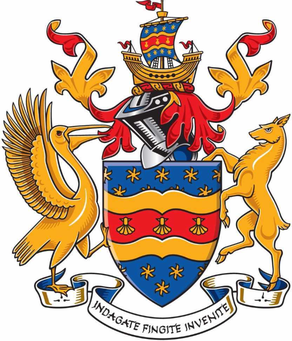
The University of Plymouth is a public research university based predominantly in Plymouth, England, where the main campus is located, but the university has campuses and affiliated colleges across South West England. With 18,410 students, it is the 57th largest in the United Kingdom by total number of students.
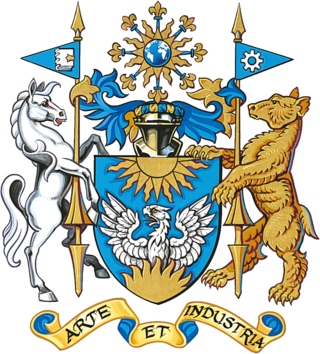
Coventry University is a public research university in Coventry, England. The origins of Coventry University can be linked to the founding of the Coventry School of Design in 1843. It was known as Lanchester Polytechnic from 1970 until 1987, and then as Coventry Polytechnic until the Further and Higher Education Act 1992 afforded its university status that year and the name was changed to Coventry University.

Teesside University is a public university with its main campus in Middlesbrough, North Yorkshire in North East England. It was officially opened as Constantine Technical College in 1930, before becoming a polytechnic in 1969, and finally granted university status in 1992 by the Privy Council.

Billingham is a town and civil parish in County Durham, England. The town is on the north side of the River Tees and is governed as part of the Borough of Stockton-on-Tees unitary authority. It had a population of 35,165 in the 2011 Census.

Stephenson College is a constituent college of Durham University in Durham, England.

John Snow College is a constituent college of Durham University. The college was founded in 2001 on the University's Queen's Campus in Stockton-on-Tees, before moving to Durham in 2018. The College takes its name from the nineteenth-century Yorkshire physician John Snow, one of the founders of modern epidemiology.

Tees Valley is a combined authority area in Northern England, around the lower River Tees. The area is not a geographical valley; the local term for the valley is Teesdale. The combined authority covers five council areas: Darlington, Hartlepool, Middlesbrough, Redcar and Cleveland and Stockton-on-Tees.

Teesside International Airport, previously Durham Tees Valley Airport, is a minor international airport located between Darlington and Stockton-on-Tees, County Durham, Northern England. It is about 10 mi (16 km) south-west of Middlesbrough. The airport serves the North East, primarily Teesside, County Durham and North Yorkshire.
The University of Suffolk is a public university situated in Suffolk and Norfolk, England. The university was established in 2007 as University Campus Suffolk (UCS), founded as a collaboration between the University of East Anglia and the University of Essex. The university's current name was adopted after it was granted independence in 2016 by the Privy Council and was awarded university status.
Durham University School of Medicine, Pharmacy and Health was founded on Teesside in 2001 as a partner with the Newcastle University Medical School to educate medical students in the first phase of their medical education. On 1 August 2017 it was transferred to Newcastle University, becoming part of Newcastle's Faculty of Medical Sciences and relocating to Newcastle.

The Colleges of Durham University are residential colleges that are the primary source of accommodation and support services for undergraduates and postgraduates at Durham University, as well as providing a focus for social, cultural and sporting life for their members, and offering bursaries and scholarships to students. They also provide funding and/or accommodation for some of the research posts in the University. All students at the University are required to be members of one of the colleges.
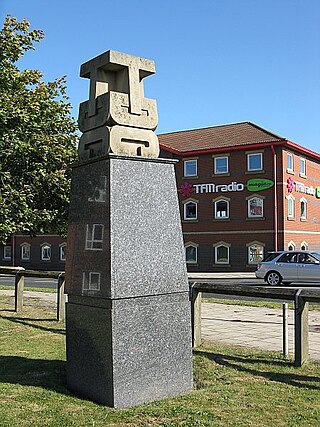
Teesdale Business Park is a major business park on the former site of Head Wrightsons' Teesdale works in Thornaby-on-Tees, North Yorkshire, England. The park was redeveloped by the Teesside Development Corporation. The area is immediately north of Thornaby railway station.
Tees Valley Regeneration was an urban regeneration company covering the Tees Valley area of North East England and at one time was the largest urban development agency in England. The headquarters were at Cavendish House, Teesdale Business Park in Thornaby-on-Tees.

The history of Durham University spans over 190 years since it was founded by Act of Parliament. King William IV granted royal assent to the Act on 4 July 1832, and granted the university a royal charter on 1 June 1837, incorporating it and confirming its constitution. The university awarded its first degrees on 8 June 1837. It describes itself as the third-oldest university in England and is listed by the European University Association as one of Europe's oldest hundred universities in continuous operation.
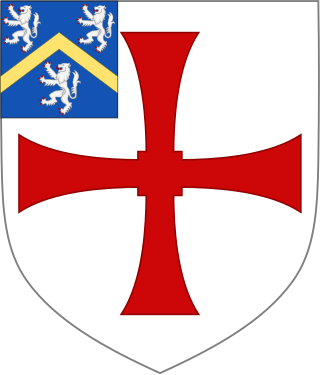
Durham University is a collegiate public research university in Durham, England, founded by an Act of Parliament in 1832 and incorporated by royal charter in 1837. It was the first recognised university to open in England for more than 600 years, after Oxford and Cambridge, and is thus the third-oldest university in England. As a collegiate university, its main functions are divided between the academic departments of the university and its 17 colleges. In general, the departments perform research and provide teaching to students, while the colleges are responsible for their domestic arrangements and welfare.
UCL East is a campus of University College London located at the Queen Elizabeth Olympic Park in Stratford, London. Operations at the campus began with the opening of One Pool Street in 2022 and the campus was formally opened with the opening of the Marshgate building in 2023. The 2017 masterplan for the campus calls for the construction of another four buildings in the 2030s.
